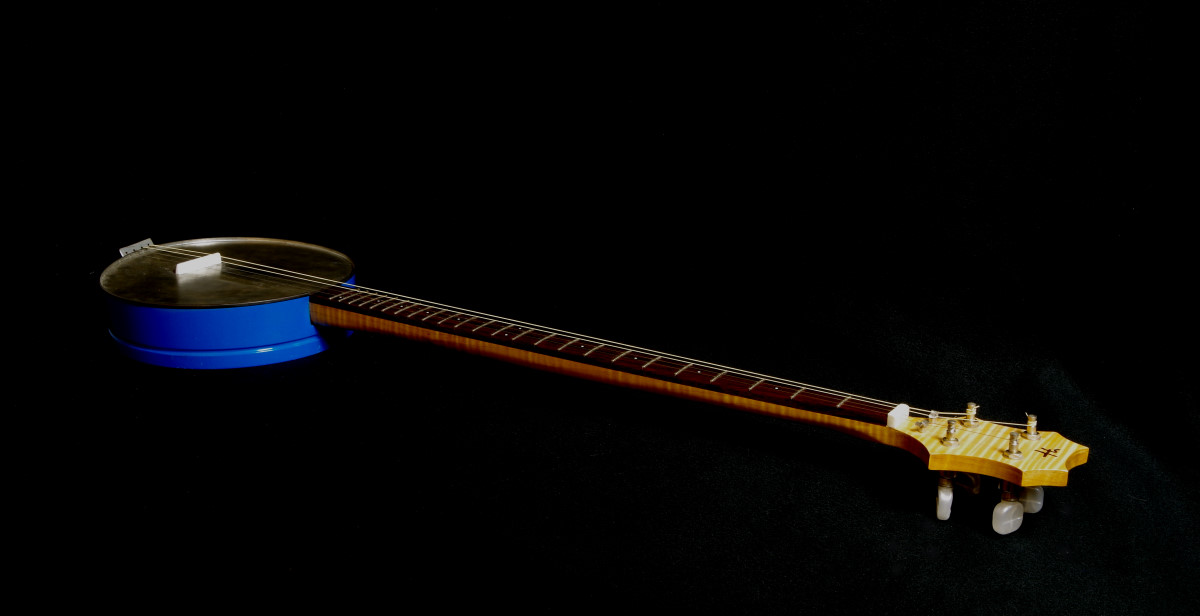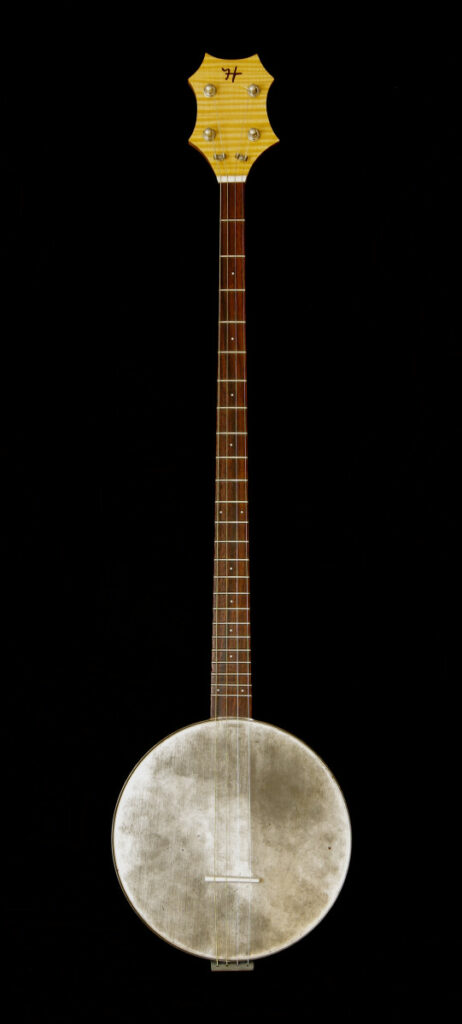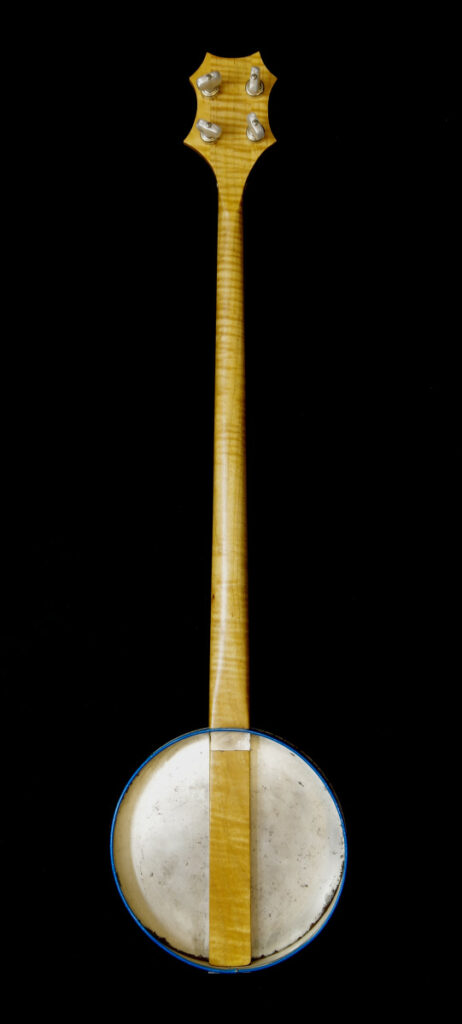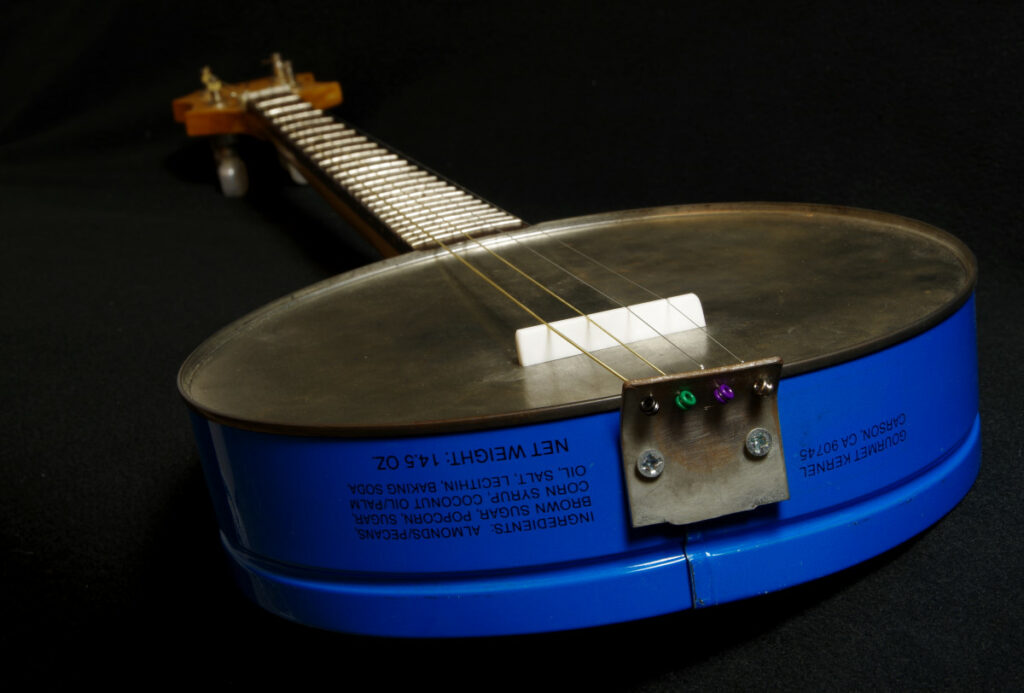

MaY Contain no Cookies
2009
According to the ingredients on this tin, I’m pretty sure it wasn’t even cookies. But just as I’m not convinced that electric guitar pickups care about the tone wood, I doubt that cookie tin banjos care about whether they were once full of popcorn or pralines.
It all started with a trip to Home Depot, which, I’m told, is eerily similar to how Antonio Stradivari got into making fiddles (although in his case it was Casa Deposito). I was there looking at dumb wood for some dumb home project and saw a piece of ridiculously flamed maple. It was absolutely gorgeous and I bought it, mostly just to own it.
It sat around for a long time. It was too small to make a guitar neck, and it didn’t occur to me that I could glue pieces of it together to make it bigger. Or maybe it was also too short, I forget. In any case, my primitive Internet searching for musical things led me to read about cookie tin banjos. I had (and still have) a limited understanding of how banjos work, much less the folk art variety made from trash, but I figured I’d give it a shot.
All that remained was to wait for someone I knew to pick up one of those emergency Christmas presents that people wrap and stash in a closet in case someone shows up that they forgot about. In this case, the universe smiled and/or frowned upon me, and provided me with this tin.
Construction
This is not a well-made instrument. I have limited metal working tools or skills, and modified the cookie tin to accept the neck with a cut-off wheel in a Dremel and a pair of tin snips that looked like they were salvaged from a sunken Spanish galleon (but they had “tin” in the name, so I assumed they were appropriate). The tin is upside down, so what would be head of a normal banjo is actually the bottom of the tin. I lost the lid for it. It wasn’t meant to be played with the lid in place, as it’s modeled after an open-backed (as opposed to a resonator) banjo, although some might say that the ability to mute it would be a tonal upgrade.
The neck is a real hack job. As mentioned, I don’t actually know anything about banjos. I was vaguely aware that a bluegrass-style 5-string banjo has a short little 5th string that inexplicably emerges out of the side of the neck, and rejected that idea out of hand as being far too complicated. That left me with a maximum of 4 strings, which I guess is a style of banjo predominantly used in Irish music, Dixieland Jazz, and by the Mummers, in descending order of the low end of my musical tastes. This is the neck that taught me to work from a full-sized plan, because by the time I got done making the taper even on both sides of the center line by eyeball, it was thinner than a ukulele neck at the nut. As the old saying goes, “There’s no money in cookie tin banjos above the 5th fret,” and on this one, below the 5th fret the strings are so close together they’re almost touching. I also was quite afraid of truss rods at the time, so to compensate, I left the neck chunky, inlaid a carbon fiber rod, and used a fingerboard that is approximately 200% thicker than necessary, hoping that gluing it to the twig would provide some sort of “plywood effect.” The neck meets the body at approximately the 26th fret, which is absurd, although there are only actually 24 frets. That’s still way too many, but it does provide the full two octaves per string in case you want to shred like “Appalachian Joe” Satriani or something.
The tailpiece is made from a cut up and bent door hinge. The nut and saddle are cutoffs of Corian countertop. The layout of the headstock is so bad that every string requires a string tree to keep it from jumping the nut slot. I splurged on planetary-geared banjo tuners, which are only slightly less dumb than pure friction, un-geared banjo tuners, and still wish that I’d just put cheap guitar tuners on it because worm gears don’t unwind as easily.
All of that said, it can technically make noise.
Sound
I have no way to evaluate the sound of a cookie tin banjo. It is vaguely banjo-like to me, although someone more steeped in “real” banjos might disagree.



